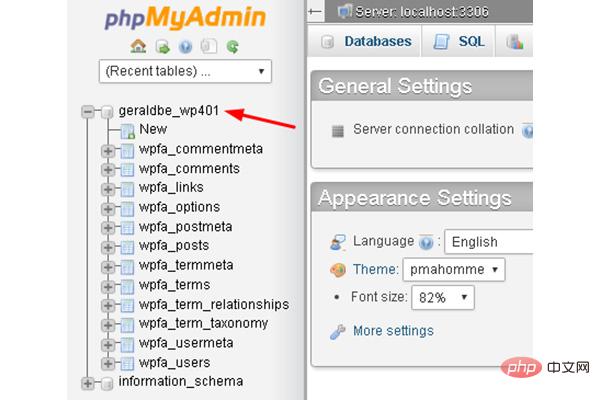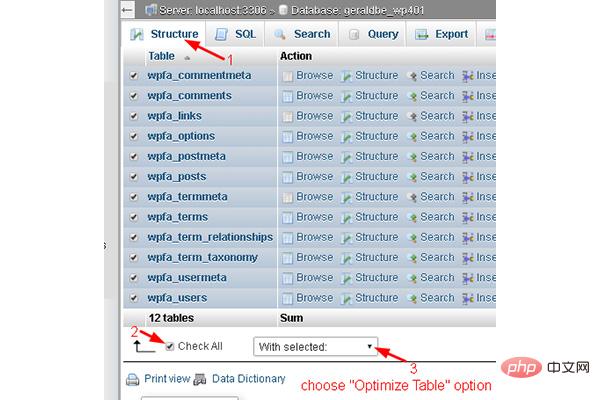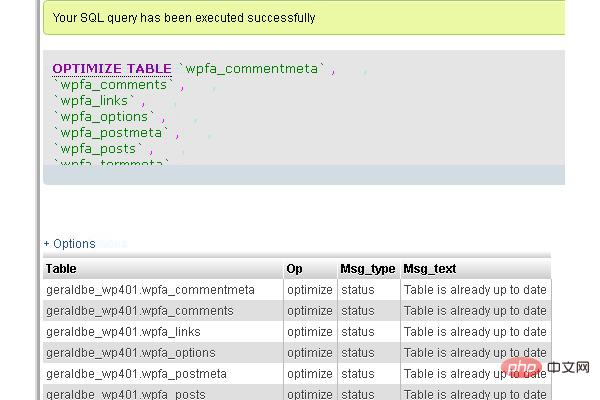Home > Article > Backend Development > How to optimize a MySQL database using phpMyadmin
How to use phpMyadmin to optimize the MySQL database: 1. Enter phpMyAdmin and select the required database; 2. Select the Structure field, press Check All and select Optimize Table from the drop-down list.
The operating environment of this article: Windows 7 system, Dell G3 computer, phpMyadminv4.2.8.1 version.
On websites with a lot of content, the database can become very large. In this case, optimizing the database will help improve the performance of the site. Optimizing your MySQL database is important for many reasons, the most important of which is to improve the speed at which your MySQL database displays results.
Typically, optimization will produce more noticeable results as the database becomes larger (e.g., over 7500 rows or over 350-500MB in size). The optimization part can be performed using phpMyAdmin, a free MySQL database management tool provided by most hosting providers.
How to use phpMyadmin to optimize MySQL database?
Access phpMyAdmin
Step 1 - Access the database
Enter phpMyAdmin and Select the desired database.

Step 2 - Optimize MySQL database
Select the Structure field and press Check All and select Optimize Table from the drop-down list as shown below.

After that, this screen will be displayed (normally, it will display the message OK instead of Table is already up to date):

Now your MySQL database has been successfully optimized. If you encounter any errors or issues during this process, please contact your hosting provider for assistance. In short, OPTIMIZE TABLE performs the following three tasks:
1. Shrink the data pages
2. Shrink the index pages
3. Calculate new index statistics
More information about OPTIMIZE TABLE syntax can also be found in the official MySQL documentation.
Conclusion:
This article is an introduction to how to use phpMyAdmin to optimize the MySQL database to improve website performance. Keep in mind that if you have an active site, you can perform the optimization process again after a period of time or if the database grows significantly to ensure optimal performance.
The above is the detailed content of How to optimize a MySQL database using phpMyadmin. For more information, please follow other related articles on the PHP Chinese website!